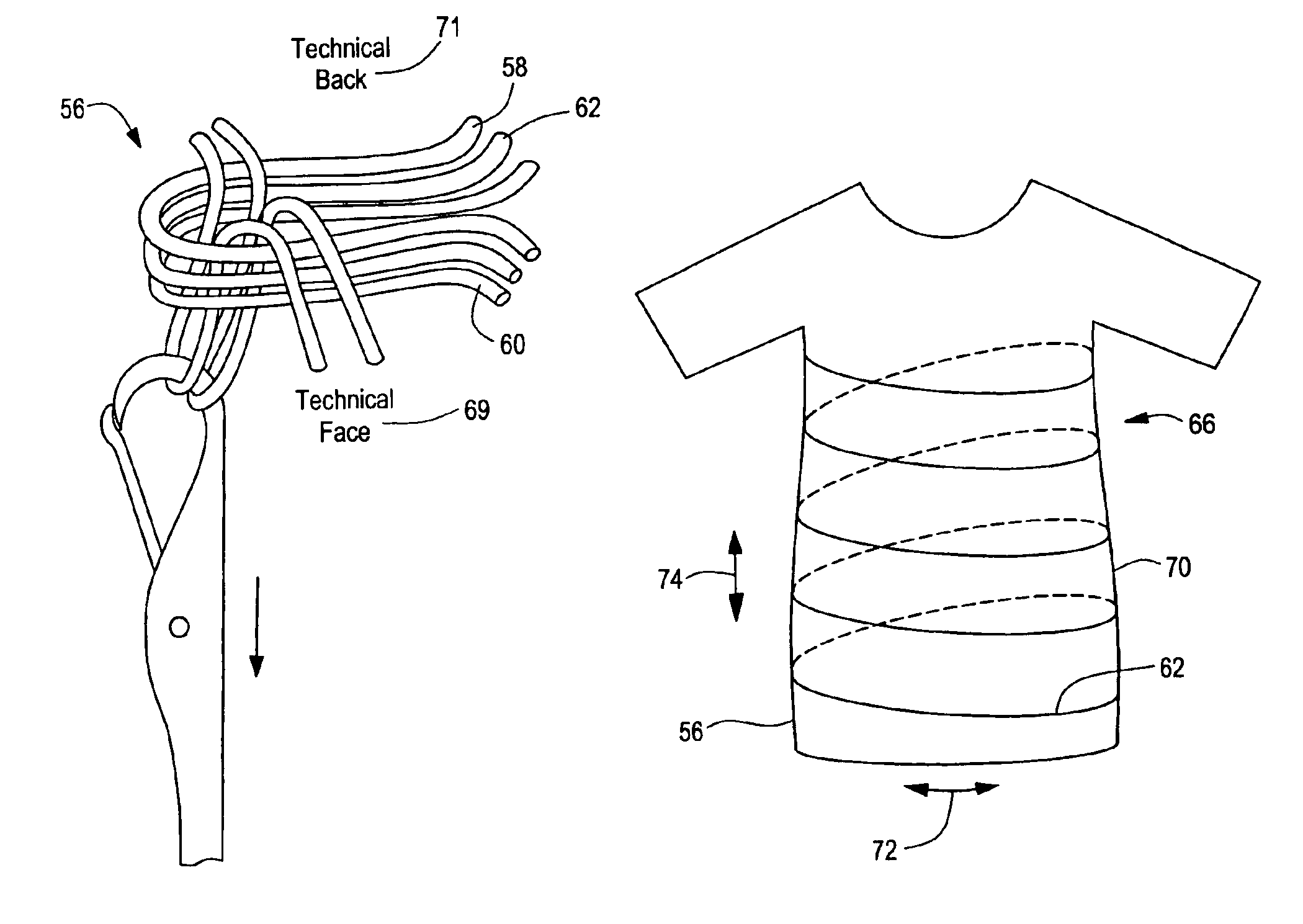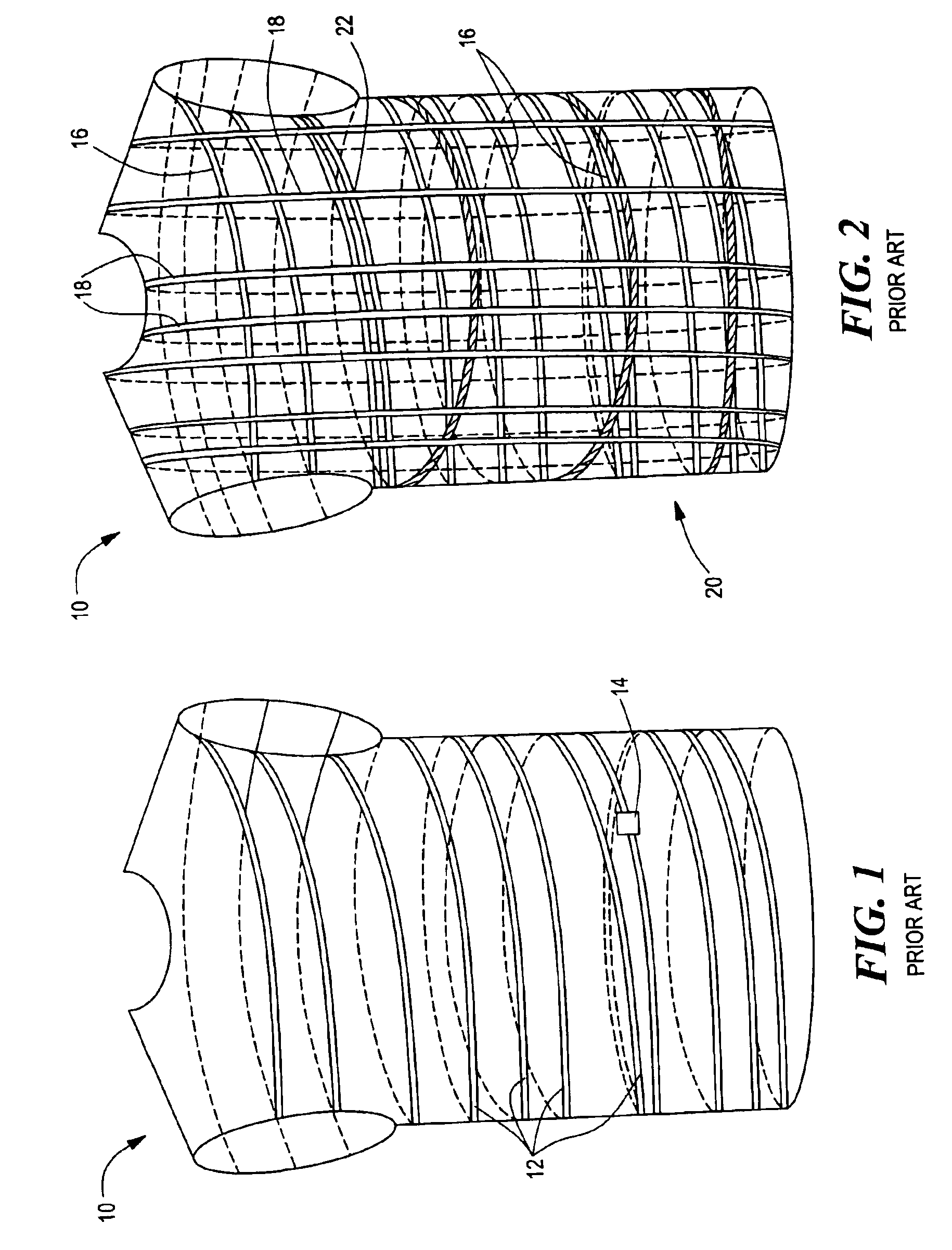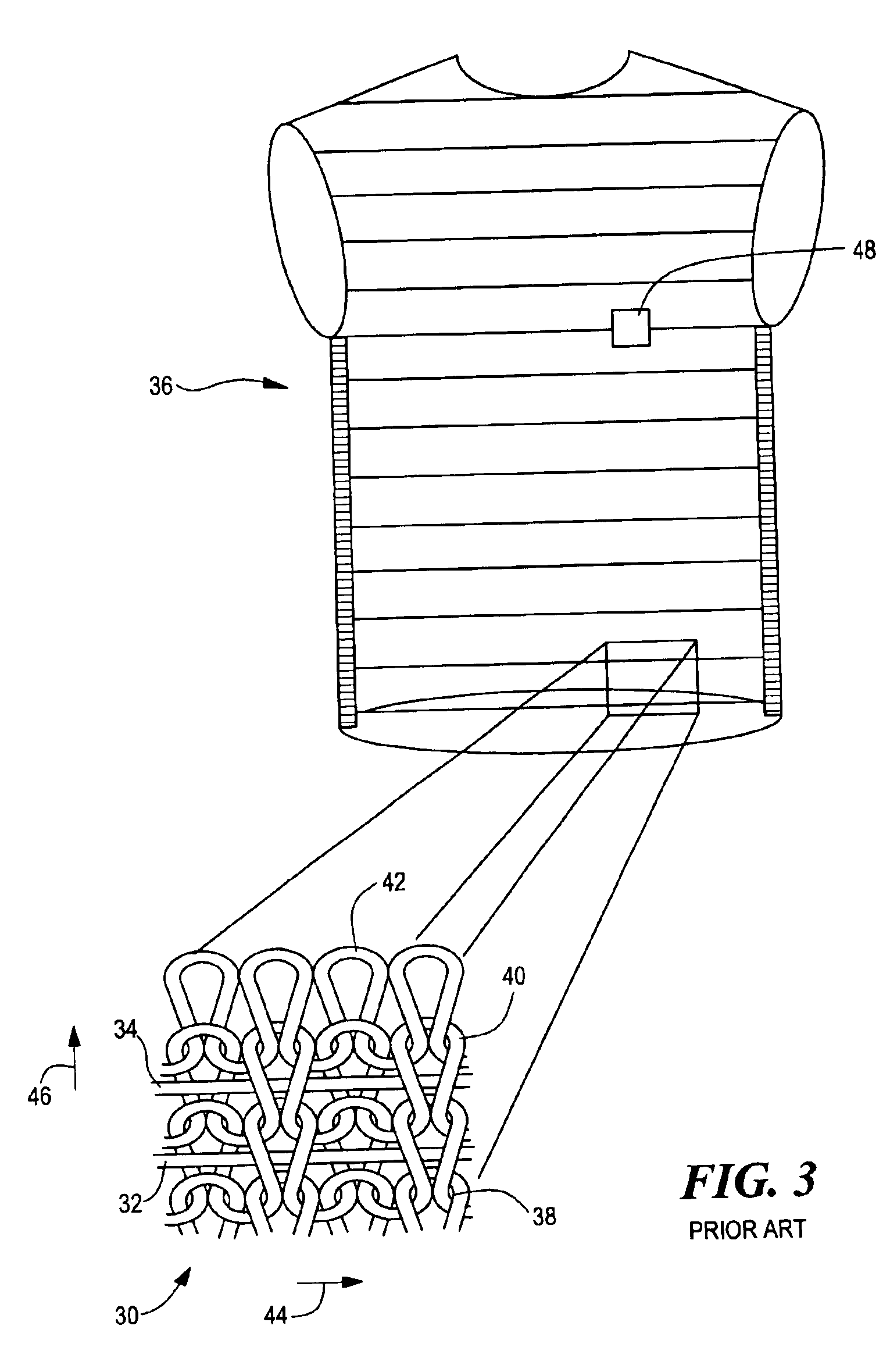Tubular knit fabric and system
- Summary
- Abstract
- Description
- Claims
- Application Information
AI Technical Summary
Benefits of technology
Problems solved by technology
Method used
Image
Examples
Embodiment Construction
[0064]Aside from the preferred embodiment or embodiments disclosed below, this invention is capable of other embodiments and of being practiced or being carried out in various ways. Thus, it is to be understood that the invention is not limited in its application to the details of construction and the arrangements of components set forth in the following description or illustrated in the drawings.
[0065]As delineated in the Background, the '551 patent discloses a weaving process which produces woven garment 10, FIG. 1 with intelligence capability by weaving non-elastic conductive fibers 12, made of a material such as copper, stainless steel, and the like, or plastic optical fibers into garment 10. A distinct drawback of this design is that the non-elastic conductive fibers 12 have little or no elongation capability, hence garment 10 cannot stretch to provide a tight fitting, body conforming garment. Because of the loose fit of garment 10, sensor 14 provides inaccurate and less reliab...
PUM
 Login to View More
Login to View More Abstract
Description
Claims
Application Information
 Login to View More
Login to View More - R&D
- Intellectual Property
- Life Sciences
- Materials
- Tech Scout
- Unparalleled Data Quality
- Higher Quality Content
- 60% Fewer Hallucinations
Browse by: Latest US Patents, China's latest patents, Technical Efficacy Thesaurus, Application Domain, Technology Topic, Popular Technical Reports.
© 2025 PatSnap. All rights reserved.Legal|Privacy policy|Modern Slavery Act Transparency Statement|Sitemap|About US| Contact US: help@patsnap.com



